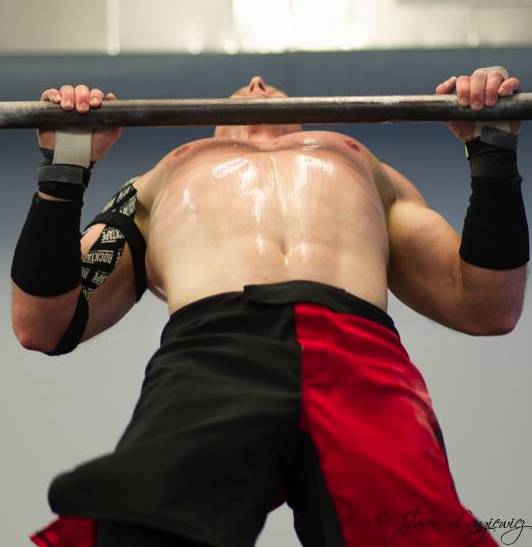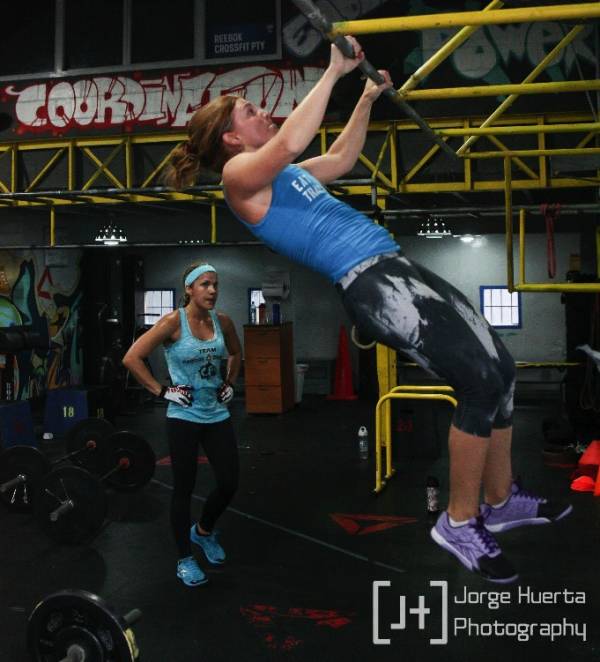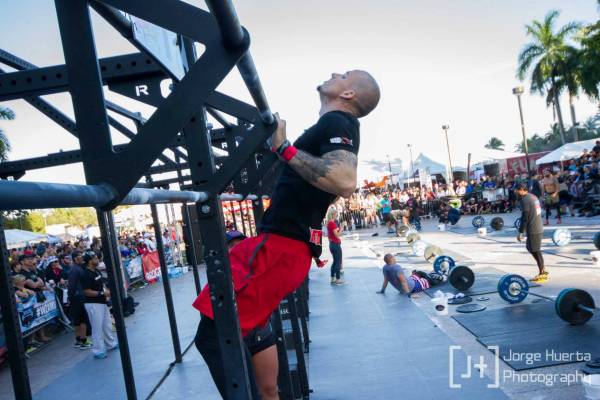I’ve been accused of being a CrossFit hater on more than one occasion. While I understand why my opinions might rankle a few less secure individuals, the truth is I actually love CrossFit.
I did CrossFit for two years pretty religiously and it completely reinvigorated my love for training. I’ve since moved in a different direction due to an overwhelming need to deadlift as much weight as possible, but I still do the majority of my training at a CrossFit box.
Of the various aspects of CrossFit I’ve seen criticized, none seem to me to be quite as polarizing as the kipping pull up. I’m not going to disagree that it looks silly and isn’t a real pull up, but I’m tired of reading criticisms based on shoulder mechanics that have zero basis in reality.
Kipping Pull Ups Are Not Strict Pull Ups
The first criticism: kipping is stupid because it’s not a real pull up. Okay, yes, that’s true, but I’m not exactly sure this is a criticism so much as an observation. It’s like standing next to someone while they’re pulling and saying, “Hey! That’s not a squat! That’s a deadlift!” Good call, bud.
Kipping pull ups and strict pull ups are different movements with different purposes. The inability to recognize this is hardly the fault of the kip. Strict pull ups are a strength movement. They do not exhibit an unusually high need for technical proficiency or utilization of power production and momentum. Kipping pull ups fall on the opposite end of the strength-power spectrum.
![]() Click To Tweet: Kipping pull ups and strict pull ups are different movements with different purposes
Click To Tweet: Kipping pull ups and strict pull ups are different movements with different purposes
Kipping pull ups are, for the most part, a means to an end. They are a common movement seen in competition or in programming for competition-level athletes. Why? Because in competition sometimes you need to get your chest to the bar as many times as possible in the shortest time possible.

Athletes are not performing this movement as an exercise in its truest definition. Saying kipping pull ups are stupid because they aren’t a real exercise is roughly as valuable as criticizing a baseball pitch as not being good for creating shoulder stability. That is not and never was the purpose of the pitch. Pitching is a sport-specific movement that achieves a specific goal relative to the sport in which it is used.
Even if you were to look at the kipping pull up as an exercise, saying it’s not a real pull up is still hardly a criticism. Tell me something, would you ever sprint just three steps? How about rowing, would you ever watch someone rowing on an erg and think, “Oh, those rows are so stupid. Barbell rows are so much more effective for building strength. Don’t you guys even know proper form? LOL #CrossFitFail.”
Kipping pull ups are a highly technical movement that, when utilized as an exercise, provide a brutal anaerobic demand on the musculature of the upper body. They’re a hundred meter sprint for your arms. Kipping pull ups aren’t meant for building raw strength and if you see them or use them that way, that’s on you, pal.
Kipping Pull Ups Are Dangerous
The second common criticism: kipping pull-ups are dangerous and harmful to the joints. Well, sure – if you suck at them.
It doesn’t matter whether you use a standard or butterfly kip, but in my mind there is a biomechanical beauty to a correctly performed kipping pull up. Properly executed technical movements just look pretty (see: Rich Froning doing pretty much anything) because they are uncommon examples of the human body moving at its highest level of mechanical efficiency.
A lot of people who have zero understanding of shoulder mechanics look at the kipping pull up and instinctively know that trying it would hurt their shoulders. They then decide that because of that initial instinct the kipping pull up must be bad for all shoulders everywhere, all the time.
Unfortunately, most of these people are right. Kipping would hurt their shoulders because they have jacked up, mechanically inefficient posture. Hell, their shoulders probably already hurt just from existing. But given the requisite mobility and strength, properly executed kipping pull ups are probably easier on your shoulders than slow-grind, strict pull-ups for two main reasons.
The first reason is that the majority of the actual pulling is performed while your upper body is closer to horizontal than vertical. This is a stronger, more stable pulling position for a healthy shoulder because you’re not pulling from directly overhead. The second reason is that the bottom of the kip, the full extension lockout, is yet another one of the most stable positions for your shoulder. It’s similar to the catch position for a jerk or a snatch. That’s not just a coincidence.

I’ve heard a lot of people say that it’s easy to dislocate your shoulder doing kipping pull ups. If that were true you’d see a lot of dislocations in people doing overhead pressing stuff, and while it does happen, it’s far from the norm.
The most common dislocations occur when the arm is in the cocking position (ninety degrees of abduction/ninety degrees of elbow flexion with reference to anatomical position) and something hits your hand hard and pushes it back. This will cause an anterior dislocation of the humeral head and can cause some serious soft tissue damage. This is also a position that should occur at no point during any of these exercises. If it does, you’re doing it wrong.
Why You Might Continue Doing the Kipping Pull Up
Honestly, as someone who has participated in the rehab of hundreds of athletes, I find the idea that the kipping pull up is inherently super dangerous and therefore needs to be constantly denounced pretty funny. You know what’s really bad for your shoulders? Throwing.
Baseball is terrible on your shoulders, but how often do you see some internet-fitness-guru post the ten reasons you don’t need to pitch? They don’t, because that would be stupid. A golf swing is also pretty horrendous for your joints, as is the posture in the ready position for a volleyball player or pretty much the entire on-field life of a field hockey athlete.

Kipping pull ups are far less dangerous than all of these things. I’ve worked with a lot of people, but you know how many athletes I’ve helped who were injured doing kipping pull ups? Not one. I’ve seen more injuries from a flat barbell bench press and far more injuries from overhead pressing than overhead pulling.
Exercise efficacy is contextual. The purpose of the movement should mirror the task at hand. It’s pretty safe to say that if you don’t CrossFit, you probably don’t need to train kipping pull ups. Their main purpose and utility is entirely concerned with CrossFit – and competition in particular – but that doesn’t mean you can’t benefit from them.
As far as the dangers go the jury is still out, but in my experience soccer, football, baseball, and golf all contain way more dangerous movements than kipping. So my question is this: where’s the army of bloggers denouncing the golf swing?
![]() Click To Tweet: The golf swing and baseball pitch are more dangerous than the kipping pull up
Click To Tweet: The golf swing and baseball pitch are more dangerous than the kipping pull up
Photos 2 courtesy of CrossFit Impulse.
All other photos courtesy of Jorge Huerta Photography.






